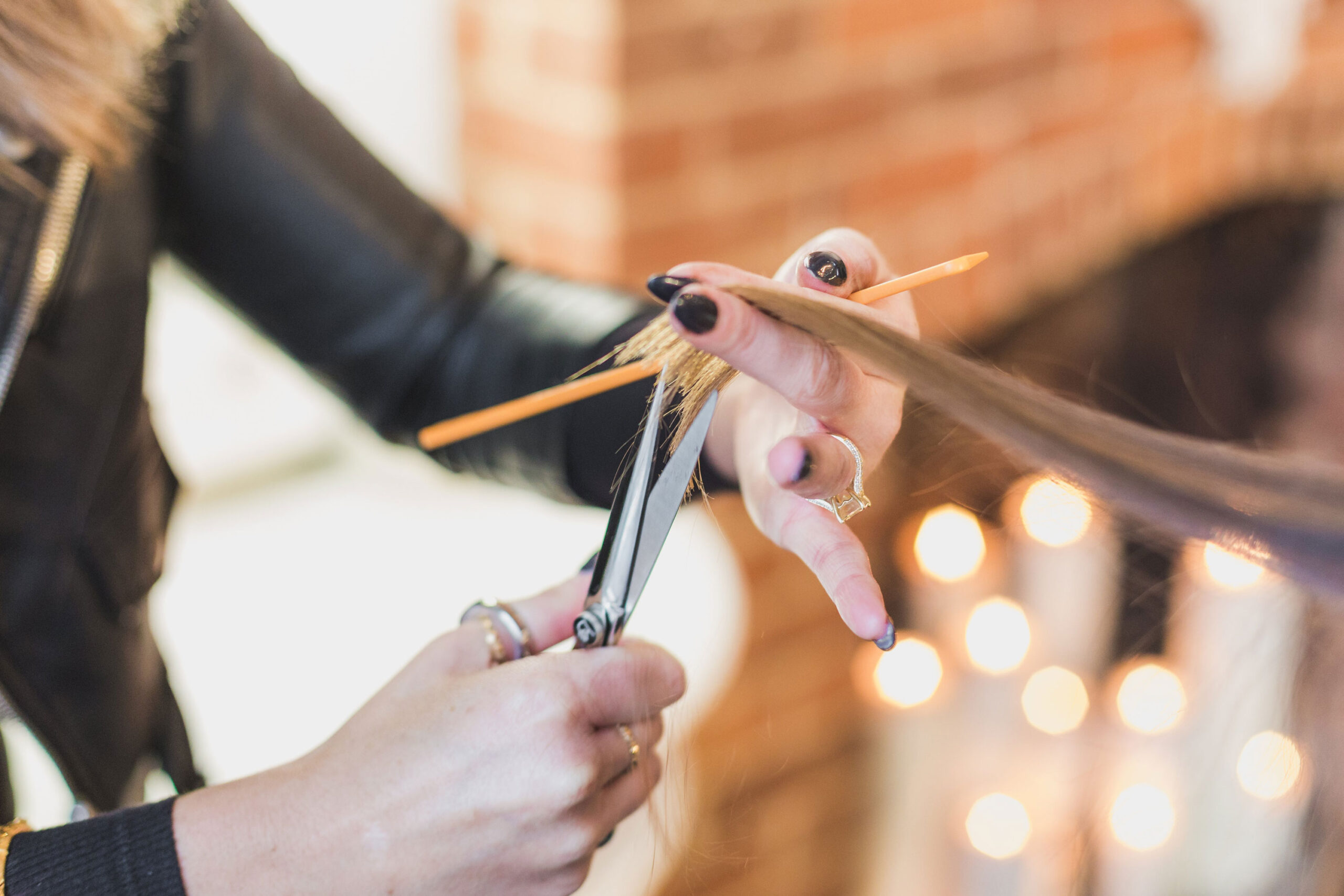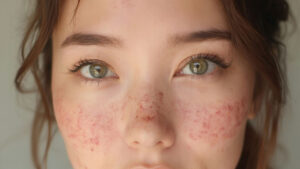Damaged hair can result from various factors, including heat styling, chemical treatments, and environmental stressors. Fortunately, several effective treatments can help restore your hair’s health and vitality.
Trimming Split Ends: The First Step to Healthier Hair
One of the most immediate actions you can take to improve the health of damaged hair is to trim split ends. Split ends can travel up the hair shaft, causing further breakage and making hair appear frizzy and unkempt. Regular trims every 6-8 weeks help maintain hair integrity and prevent further damage.
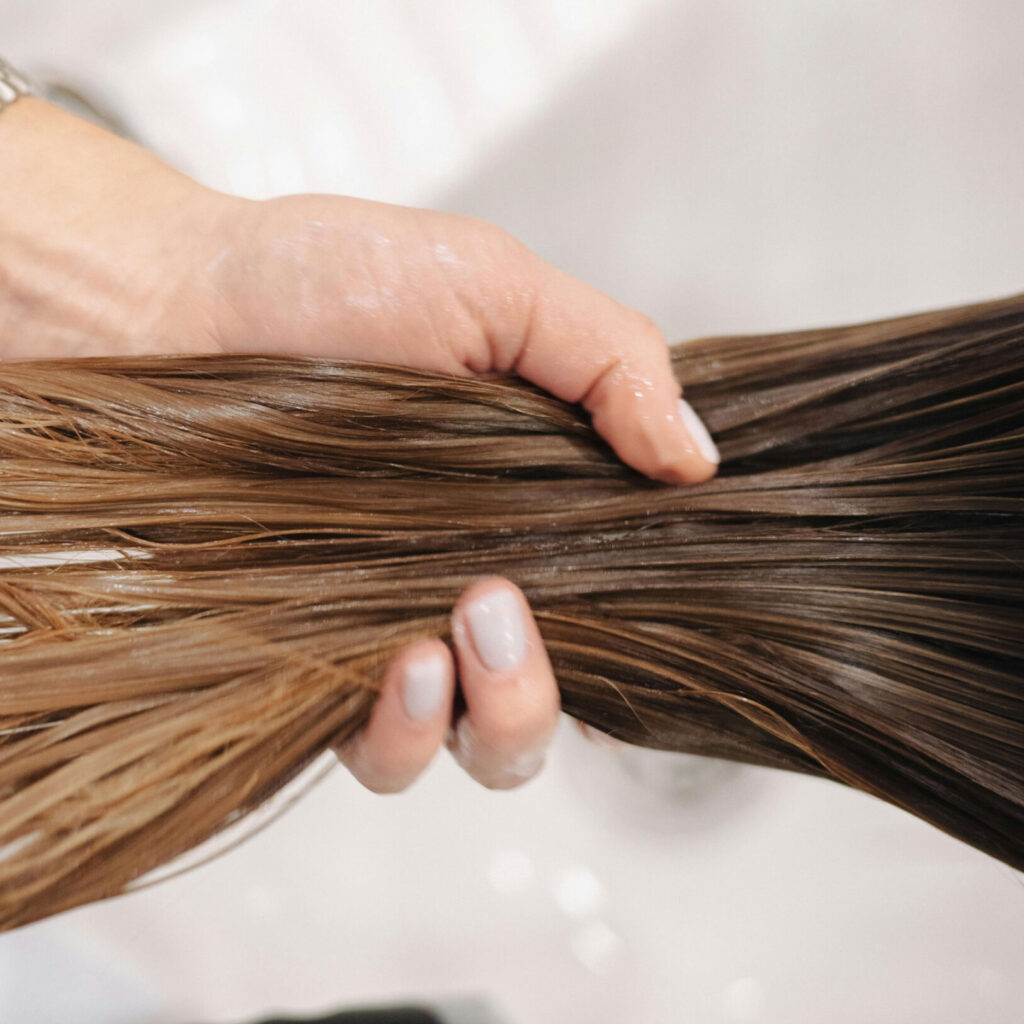
Bond-Building Treatments: Restoring Hair from Within
Bond-building treatments have revolutionized hair repair by targeting the internal structure of the hair. Products like Olaplex No. 3 Hair Perfector and K18 work by reconnecting broken disulfide bonds in the hair, resulting in stronger, more resilient strands. These treatments are especially beneficial for hair that has been chemically treated or exposed to excessive heat.
Deep Conditioning Masks: Intensive Hydration for Damaged Hair
Deep conditioning masks provide intense moisture and nourishment to dry, brittle hair. Ingredients like keratin, shea butter, and argan oil penetrate the hair shaft, restoring elasticity and shine. Regular use of deep conditioning treatments can significantly improve hair texture and manageability.
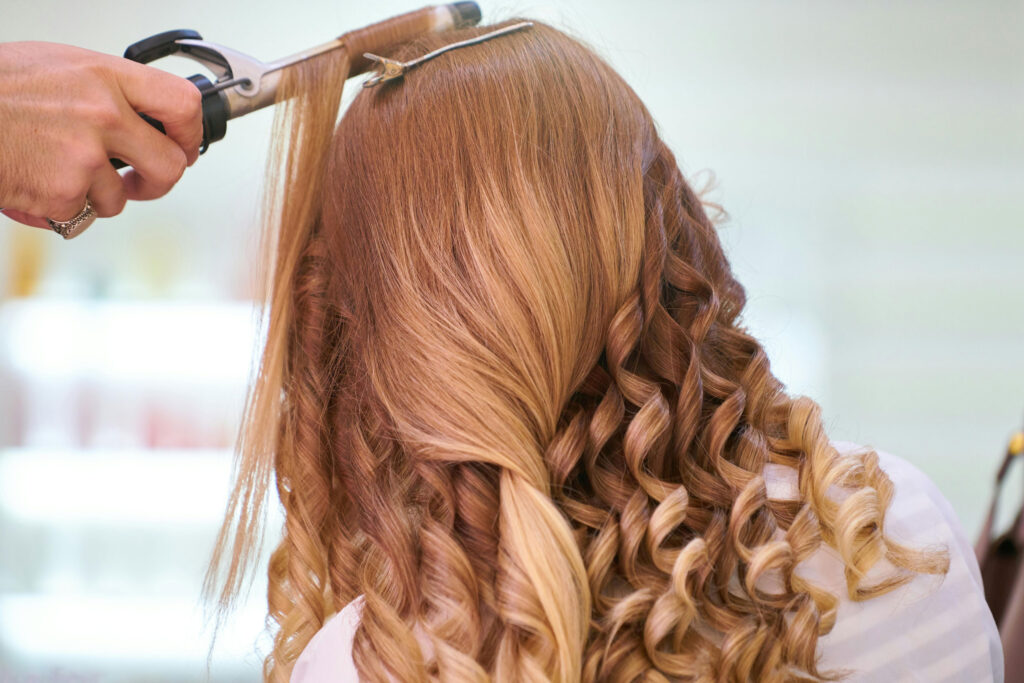
Limiting Heat Styling: Protecting Hair from Further Damage
Excessive use of heat styling tools can exacerbate hair damage. It’s advisable to minimize the use of flat irons, curling wands, and blow dryers. When heat styling is necessary, always apply a heat protectant spray and use the lowest effective temperature setting to reduce the risk of further damage.
Choosing the Right Shampoo and Conditioner: Tailoring Products to Your Hair's Needs
Selecting shampoos and conditioners formulated for damaged hair can aid in the repair process. Look for products that are sulfate-free and enriched with proteins and moisturizing agents. These formulations help cleanse the hair without stripping natural oils and provide the necessary nutrients to support hair health.
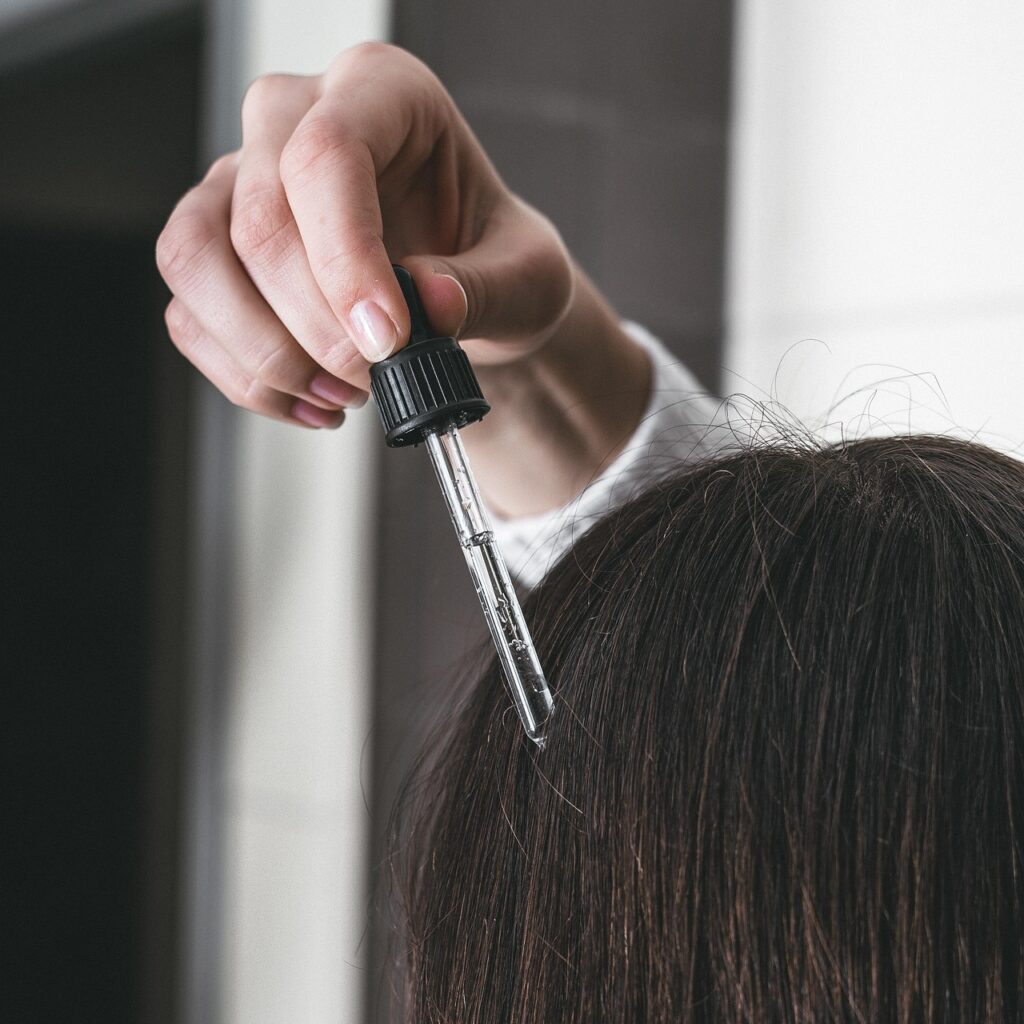
Incorporating Natural Oils: Enhancing Hair Strength and Shine
Natural oils such as coconut oil, argan oil, and jojoba oil can be beneficial in treating damaged hair. These oils penetrate the hair shaft, providing moisture and reducing protein loss. Applying these oils as pre-wash treatments or leave-in conditioners can enhance hair strength and shine.
Protecting Hair from Environmental Stressors: Shielding Against External Damage
Environmental factors like sun exposure, pollution, and harsh weather conditions can contribute to hair damage. Wearing hats, using UV-protectant sprays, and avoiding prolonged exposure to the elements can help protect your hair from these stressors.

Maintaining a Balanced Diet: Nourishing Hair from the Inside Out
Nutrition plays a vital role in hair health. A diet rich in vitamins and minerals, particularly biotin, vitamin E, and omega-3 fatty acids, supports hair growth and strength. Incorporating a variety of fruits, vegetables, lean proteins, and healthy fats into your meals can promote healthier hair.
By integrating these treatments and practices into your hair care routine, you can effectively repair damage and restore your hair’s natural vitality.
Frequently Asked Questions
What are the fastest ways to repair damaged hair at home?
To quickly repair damaged hair at home, start by trimming split ends to prevent further breakage. Use hydrating shampoos and conditioners specifically formulated for damaged hair, such as those containing keratin or natural oils. Incorporate deep conditioning treatments or hair masks weekly to restore moisture and strength. Limiting heat styling and protecting hair from environmental stressors also accelerates the healing process.
Can bond-building treatments like Olaplex or K18 really fix damaged hair?
Yes, bond-building treatments such as Olaplex No. 3 and K18 are designed to repair the internal structure of the hair by reconnecting broken disulfide bonds. These treatments have been shown to improve hair strength, elasticity, and overall health, especially in hair damaged by chemical treatments or heat styling.
How often should I use a deep conditioning mask on damaged hair?
For damaged hair, it’s recommended to use a deep conditioning mask once or twice a week. These masks provide intense hydration and nourishment, helping to restore the hair’s moisture balance and elasticity. Consistent use can lead to smoother, shinier, and more resilient hair over time.
Is it necessary to cut my hair to repair damage?
While trimming split ends is essential to prevent further damage, you don’t necessarily need a drastic haircut. Regular trims every 6-8 weeks can maintain hair health by removing the most damaged parts, allowing the rest of your hair to grow stronger and healthier.
What ingredients should I look for in shampoos and conditioners for damaged hair?
When selecting shampoos and conditioners for damaged hair, look for ingredients like keratin, biotin, argan oil, and shea butter. These components help strengthen the hair shaft, restore moisture, and improve elasticity. Additionally, opt for sulfate-free formulas to prevent further drying of the hair.
Can natural oils help in repairing damaged hair?
Yes, natural oils such as coconut oil, argan oil, and jojoba oil can penetrate the hair shaft, providing essential nutrients and moisture. Regular application of these oils can reduce protein loss, enhance shine, and improve the overall health of damaged hair.
How does heat styling contribute to hair damage, and how can I mitigate it?
Heat styling tools like flat irons and curling wands can weaken the hair’s protein structure, leading to dryness and breakage. To mitigate this, use heat protectant sprays before styling, keep the temperature at a moderate level, and limit the frequency of heat styling sessions.
Are there any dietary changes that can help repair damaged hair?
A balanced diet rich in vitamins and minerals supports hair health. Nutrients like biotin, vitamin E, omega-3 fatty acids, and iron play a crucial role in strengthening hair and promoting growth. Incorporating foods such as nuts, leafy greens, fish, and eggs can contribute to healthier hair.
How can I tell if my hair is damaged?
Signs of damaged hair include dryness, brittleness, split ends, frizz, and a lack of shine. You may also notice increased hair breakage and tangling. If your hair exhibits these symptoms, it’s essential to adopt a restorative hair care routine promptly.
Are there any professional treatments for severely damaged hair?
For severely damaged hair, professional salon treatments like keratin treatments, protein treatments, and deep conditioning therapies can provide intensive repair. These treatments work by replenishing lost proteins and moisture, restoring the hair’s strength and elasticity.
The content provided in this blog is for informational and educational purposes only. All product recommendations and skincare suggestions are intended to serve as general guidance and should not be considered a substitute for professional advice. Individual skin types and conditions vary, so please use discretion when incorporating new products or routines. We strongly recommend consulting with a licensed dermatologist or qualified healthcare professional before beginning any new skincare treatments, especially if you have sensitive skin, pre-existing conditions, or are currently using prescribed medications.
Note: All product links are for informational purposes and do not constitute endorsements. Always perform a patch test before introducing new products into your routine.

